Whether is it in your house or your backyard we often see spiders daily but how many of these are the same ones as the day before? So, how long do these eight-legged creatures are likely to stick around?
Generally speaking, spiders live for about a year. However, the duration of their lifespan depends on their gender and species. Males tend to live shorter, usually 12 months, while females tend to live longer, about 2 or 3 years. In certain instances, some species of spiders can live for decades.
Which species live the longest? And which ones live the shortest? What are their life cycles? Read on to find the answers to those questions right here. We also examine the life cycles of some of the most popular species so you can get to see how their lives unfold.
A Snapshot Of A Spider Lifespan
Not all spider life cycles are equal. Some species of spiders live rather short lives, and some of them, on the other hand, get to live even longer than large vertebrates.
House spiders, for example, often live for about one year, as do wolf spiders. Tarantulas, on the other hand, are capable of outliving large felines (lions have a lifespan of about 14 years) and can live for up to 30 years.
Courtship
It all starts with a male spider deciding to mate with a female spider. For several species, this can be a potentially life-threatening undertaking because many of them such as black widows and Australian redbacks are known to gobble up their mates following the process.
As a result, careful planning is often required. Certain male webspinners will only mate with newly molted females, who lack a fully formed exoskeleton will be incapable of inflicting lasting harm on them.
Others may maintain a firm grip on their mate’s jaws during the process to prevent her from having them for dinner.
Egg-laying
With the male out of the picture, the mom-to-be will spin a web in which to place her eggs which may number in the hundreds or even thousands.
Certain arachnids will simply suspend the sack in a safe spot and go about their business. Others will hang around close by, or even take their eggs about with them.
The Spiderling Phase
Once sufficient time has passed, i.e., a few weeks, and temperature levels are optimal, the eggs will hatch into spiderlings. These baby spiders often resemble adults in every way, except for their considerably smaller size.
Several species are known to care for their young attentively. However, the earliest stages of life for spiderlings of certain species are fraught with peril. A great example is the black widow spiderlings which do run the risk of getting eaten by larger, especially voracious siblings.
Molting And Adulthood
Once the spiderlings are ready to go out into the world, they will simply spin a silken thread that catches onto the wind; they will then sail away to distant locations to begin life anew.
And yet, because their exoskeletons are made of chitin (hard, protective organic armor), which is incapable of expanding, and they are still growing, these spiders need to molt. They do so by shedding their old outer layer of chitin and growing a new one that needs time to harden.
The number of times they will have to endure this procedure before attaining their adult form varies. Some species undergo molting over 20 times before reaching their full size.
Like all arthropods, adult spiders do molt occasionally as well. Doing so enables them to also renew internal organs and regrow limbs if necessary. During this period, they are especially vulnerable and often remain secluded.
A spider’s diet has a direct influence on how often they have to molt. If you are interested we have a complete guide to the diet of different species of spiders. The article is called, What Do Spiders Eat?
Do Some Species Of Spiders Live Longer Than Others?
In the rest of this article, we are going to compare some of the common species you might find in your house or backyard as well as some that are often kept pets.
Here are the spiders we are going to cover:
- Tarantulas
- Jumping Spiders
- House Spiders
- Daddy Long Leg Spiders
- Wolf Spiders
- Garden Spiders
1. Tarantulas
Courtship
Every year (between August and October, in North America), male tarantulas aged anywhere from five to ten years (the ages at which they become sexually mature) will emerge from their underground burrows in search of mates.
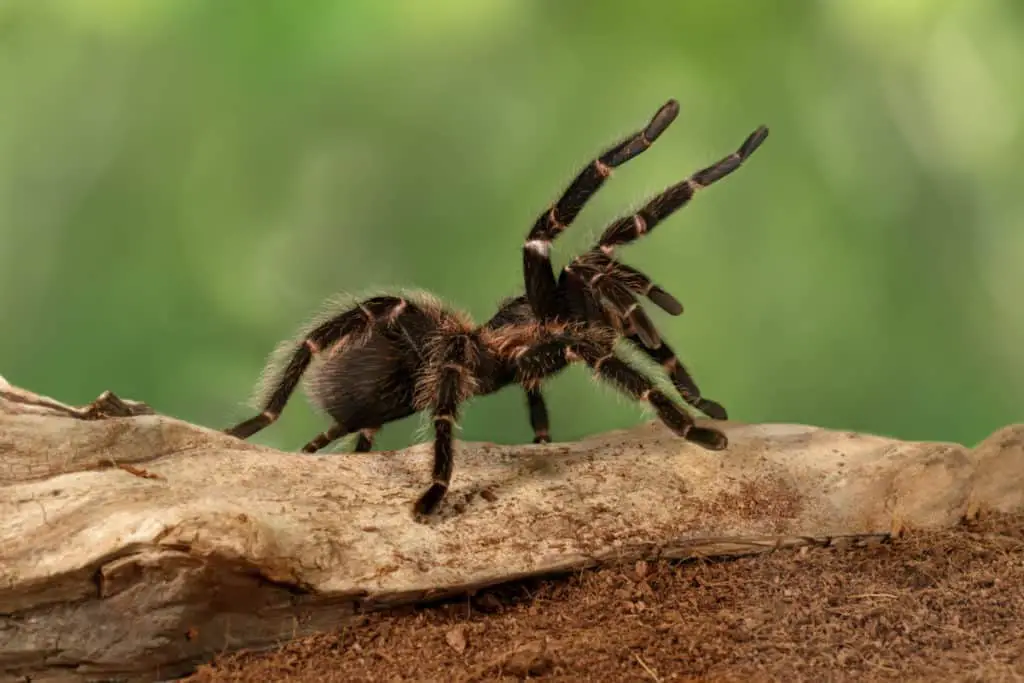
The mystery of how they get to spot a female’s residence is yet to be solved by scientists. But once they do, they announce their presence by tapping politely on the webbing covering her lair. Once the female comes running out to investigate, the male must nimbly hold onto her jaws with his front legs and mate with her.
As soon as the interlude is concluded, he beats a hasty exit (she might just decide to have him for supper) and wanders off in search of another mate.
Egg-laying
The mother-to-be weaves a thick cotton-like sac and deposits her pearl-like eggs into it and seals it. According to experts, she can lay as many as 3,000 eggs.
She will remain close to the egg sac for a period of six to nine weeks, protecting it, and turning it around to prevent its contents from getting squashed.
If you are interested we have a whole article on the egg-laying phase of the spider lifecycle. The article is called, How Long Does It Take For Spider Eggs To Hatch?
The Spiderling Phase
Following this period, newborn tarantulas will start to emerge from their eggs. They will spend a little bit of time with their mother and will molt about a week after they’ve hatched before wandering off into the world.
Molting And Adulthood
Male tarantulas become adults by the time they’ve reached their seventh year of life. Females, on the other hand, take a little longer, ten years.
Certain types of tarantulas such as the Poecilotheria Regalis (the Indian Ornamental spider) can reach maturity in as little as 18 months or even 12.
Throughout their lives, they undergo molting, their first molting takes place before they hatch. Younger tarantulas have to endure this process monthly, while older critters get away with experiencing it at least once a year.
Female tarantulas can live for as long as 20 or even 30 years, while their male counterparts generally live for ten years. (Males belonging to species that mature quickly such as the Indian Ornamental will live for a maximum of five years while females may live for as many as 20 years.)
Not only can tarantulas live for a long time but you would be surprised of long they can live without eating. We have an article that has the answers to this if you are interested, How Long Can Spiders Live Without Food?
2. Jumping Spiders
Courtship
Compared to their far larger, long-lived kin, jumping spiders seem to reach sexual maturity in virtually no time at all, at the ripe old age of nine months, they’re ready to seek out a suitable mate.
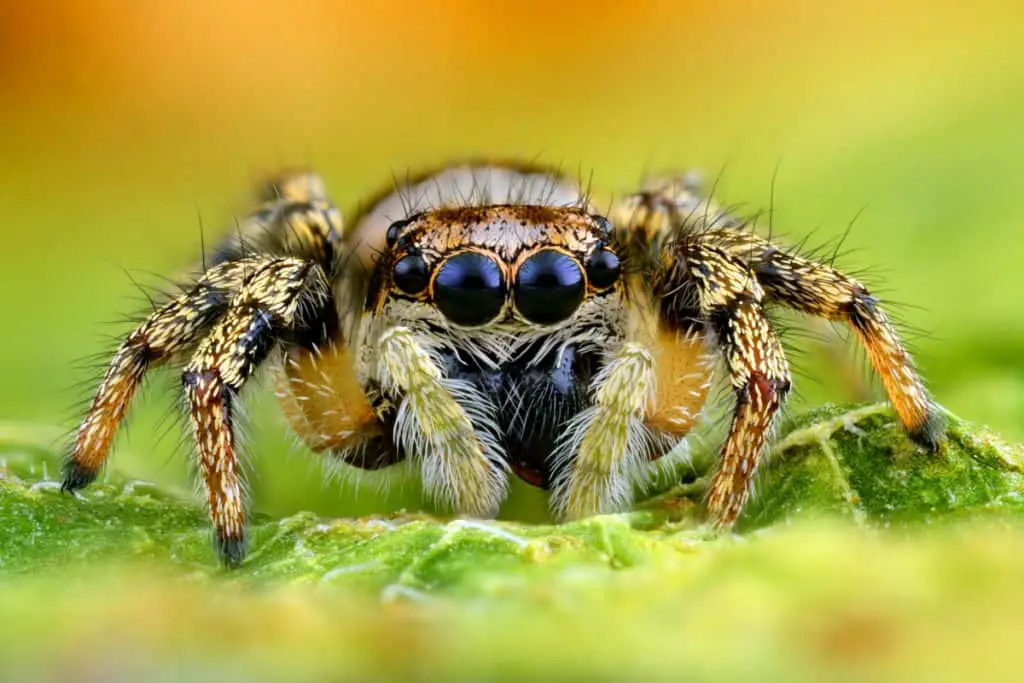
That said, courtship seems to be a far more perilous affair for them due to their habit of approaching females irrespective of their species.
The intrepid males show off their bright colors by dancing following which they then mate with the female if she approves of their display.
For certain species such as the Phidippus Clarus, this all-important period starts in early July and males die off soon afterward.
Egg Laying
A female jumping spider lays loads of eggs, 125 of them. (The Phidippus audax is capable of laying a maximum of 600 eggs. However, only about 200 of them will get to hatch.)
The Spiderling Phase
Following about six weeks, tiny baby spiders start to emerge from these eggs. They will generally remain under their mother’s watchful care for about four weeks following which they will leave home to discover the world outside.
Soon after her brood departs from her nest, the female jumping spider will die.
Molting And Adulthood
In general, these eight-legged balls of energy will molt about six times before they become adults (their very first molt occurs before they hatch).
Youngsters tend to go through the process pretty quickly, pre molting may last for just 72 hours and their brand new chitinous armor may harden sufficiently in less than a day.
Older jumping spiders on the other hand may have to endure pre molting for about one whole month.
So just how long do these keen-eyed arachnids live? Members of the Maratus Volans and Phidippus regius species generally have a lifespan of about one year, while those who belong to the Phidippus audax species live for about three years.
If you want to know more about jumping spiders then check out this article we have written about the diet of jumping spiders, What Do Jumping Spiders Eat?
3. House Spiders
Courtship
Females belonging to several spider species have a reputation for being especially ravenous with regards to their male counterparts. However, female house spiders are known to share their living quarters with males for a while and may even mate with them several times.
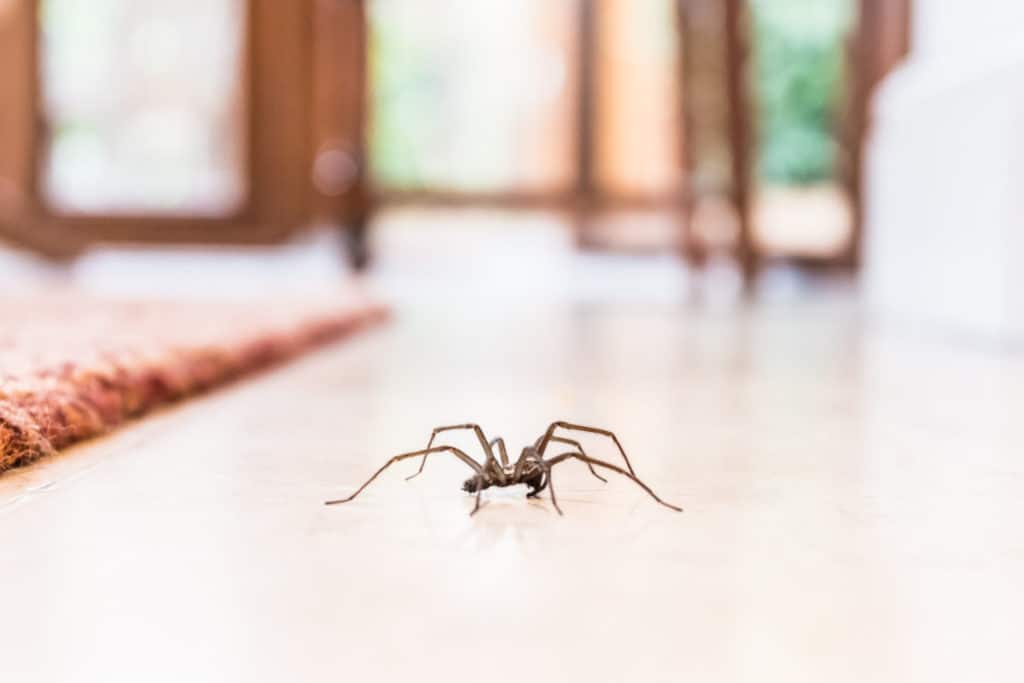
Egg Laying
Female house spiders are prolific egg layers and produce sacs that may contain about 400 eggs. Throughout their lives, they may produce as many as ten of such sacks, meaning one can produce about 4,000 eggs in her lifetime.
The Spiderling Phase
Once the miniature house spiders step into the world for the first time, they will remain with their mother for a few weeks, following which they will disperse to live their own lives.
If you are interested we have an entire article on the spiderling phase of the siders lifecycle. The article is called, What Are Baby Spiders Called?
Molting And Adulthood
While male house spiders are rather short-lived and do not live beyond autumn, females get to live for two years or even as many as six.
4. Daddy Long Leg Spiders
Courtship
Males of this species are considered to be less at risk of being eaten by potential mates, although the danger of being pounced on and devoured, is certainly present.
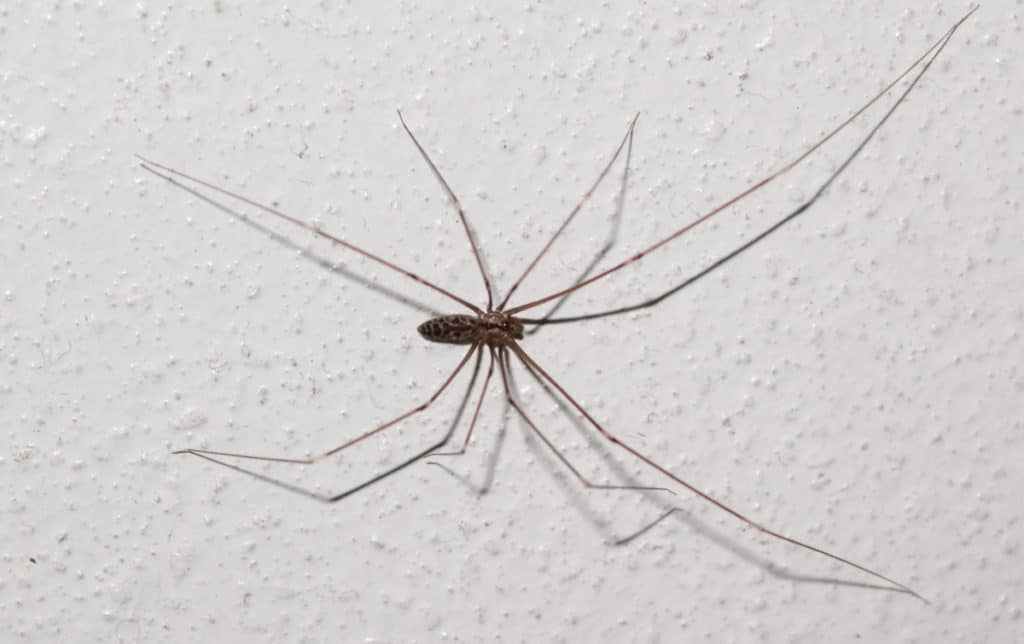
They also do quite a lot to gain the attention of females they are interested in. For example, they are known to shake her web and tap her legs following which they approach her cautiously. They are nothing if not persistent and will retreat and try again if they do not receive a favorable response the first time.
Egg Laying
Daddy long leg females lay about 50 eggs which they wrap in cotton-like webbing; they carry their clutch in their mouths until they hatch after about two or three weeks. When the tiny spindly-legged creatures emerge, their mother continues to carry them about for seven days following which she lets them run around in her web.
The Spiderling Phase
Translucent miniature versions of their parents, baby daddy long legs remain with their mother until after they molt. Following this period, they head off to face a life on the hunt.
Molting And Adulthood
Daddy long legs usually take 12 months to reach adulthood. During this period, they will molt about five times.
The overall lifespan of these prolific web spinners is two years.
5. Wolf Spiders
Courtship
Males of these species have worked out a means of reducing the risk of their ending up as the main course during their mate’s dinner.
Those of them who are old enough to mate will often hang around females who are yet to mature (a male which mates with a female acquaintance is less likely to get drenched in her digestive juices following the deed).
To signal their intentions, males drum on leaves following which the female let him know if she’s interested in taking things any further.
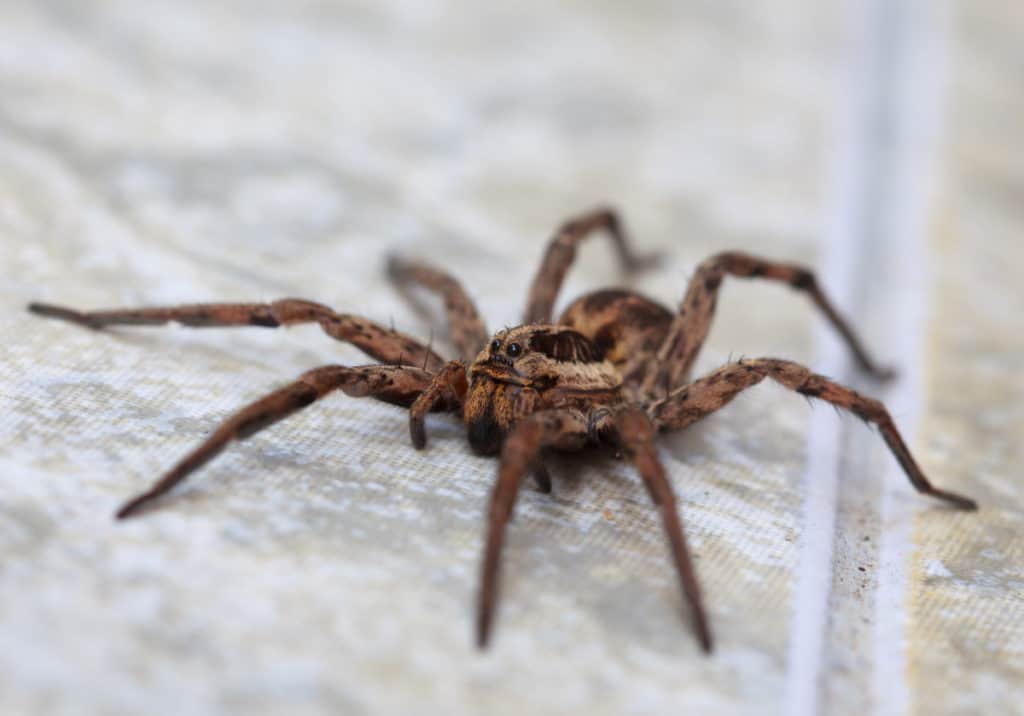
Egg Laying
Wolf spider females lay about 100 eggs. They carry them everywhere with them on their spinnerets and are the only ones who do so.
The Spiderling Phase
After three to six weeks, the eggs will hatch. The new mother will help out her offspring from the egg sack and the miniature critters will all clamber onto her abdomen piling on top of each other if necessary.
Molting And Adulthood
Male wolf spiders mature faster than their female counterparts who only attain sexual maturity after their final molt.
Soon after mating, the males die at about the age of one year, while female wolf spiders may live for as long as five years.
6. Garden Spiders
Courtship
The mating ritual among garden spiders is initiated by the male which will drum on the female’s web to get her attention. It is a process that requires loads of patience and may end with the significantly larger female deciding her mate will make a filling meal after the deed is done.
The male dies soon afterward even if he gets to survive the ordeal.
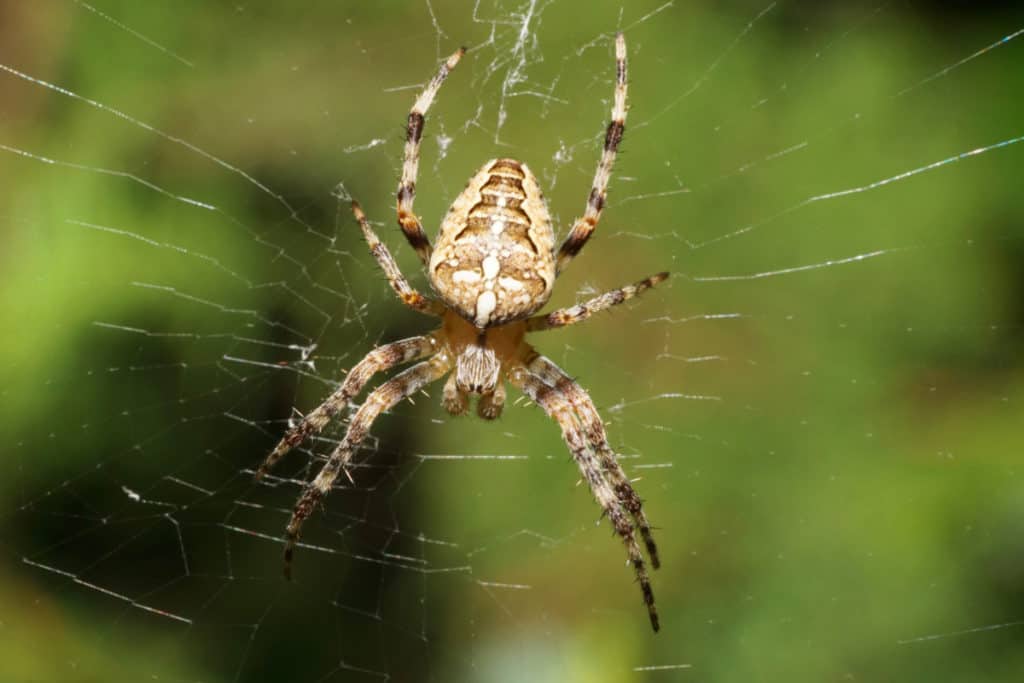
Egg Laying
The female spider will lay hundreds of eggs in a light brown oval sack to protect them from extremes in temperature. She takes great care to ensure any imperfections are repaired. However, she does not meet her hatchlings as she dies in the fall.
The Spiderling Phase
Although the spiderlings hatch in winter, they remain safe and snug in the egg sac until spring. By this time they’re almost fully grown. They do however look slightly different from adults which have black legs since theirs are orange and black.
Molting And Adulthood
Garden spiders don’t live very long and have a lifespan of about a year. They show up in May and die in the fall or winter.
However, it is worth noting that they do enjoy longer lifespans in warmer climates.
The Wrap Up
How long do spiders live? That question comes with more than just one answer.
| Species | Lifespan (Females) | Lifespan (Males) | Number of eggs | Maternal care provided |
| Tarantulas | 20 to 30 Years | 5 to 10 Years | 1400 to 3000 | Yes |
| Jumping Spiders | 3 Years | 1 Year | 125 to 600 | Yes |
| House Spiders | 2 to 6 Years | 1 Year | 400 | Yes |
| Daddy Long Legs | 2 Years | 2 Years | 50 | Yes |
| Wolf Spiders | 5 Years | 1 Year | 100 | Yes |
| Garden Spiders | 1 Year | 1 Year | >100 | No |
Some members of this large family of spiders, such as tarantulas, are luckier than others and get to hang around as long as (and even longer than) certain species of large vertebrates. A tarantula has a lifespan of up to 30 years living longer than a python which lives up to 20 years.
Others such as house spiders, jumping spiders, and wolf spiders live for three to six years at the most.
Female spiders are the luckier of both genders since they get to mate without the danger which most males face and frequently get to live longer than their male counterparts.
The wide variation in the number of years each species gets to live, the number of eggs laid by its females, and the number of times its members get to molt, provides a few more examples of just how vast this family of fascinating eight-legged arachnids is.
If you have found this article about how long spiders live interesting then you may also find some of these articles on how long some other bugs live interesting as well:
How Long Do Grasshoppers Live?
Sources:
https://vetmed.illinois.edu/pet_column/caring-for-pet-tarantulas/
https://www.earthkind.com/blog/long-spiders-live-exploring-spider-life-cycle/
https://animaldiversity.org/accounts/Phidippus_audax/
https://www.thesprucepets.com/pet-tarantulas-1237346
https://www.woodlandtrust.org.uk/blog/2019/09/how-long-do-spiders-live/
https://www.nationalgeographic.com/animals/invertebrates/group/tarantulas/
https://journeynorth.org/tm/spring/SpiderLife.html
